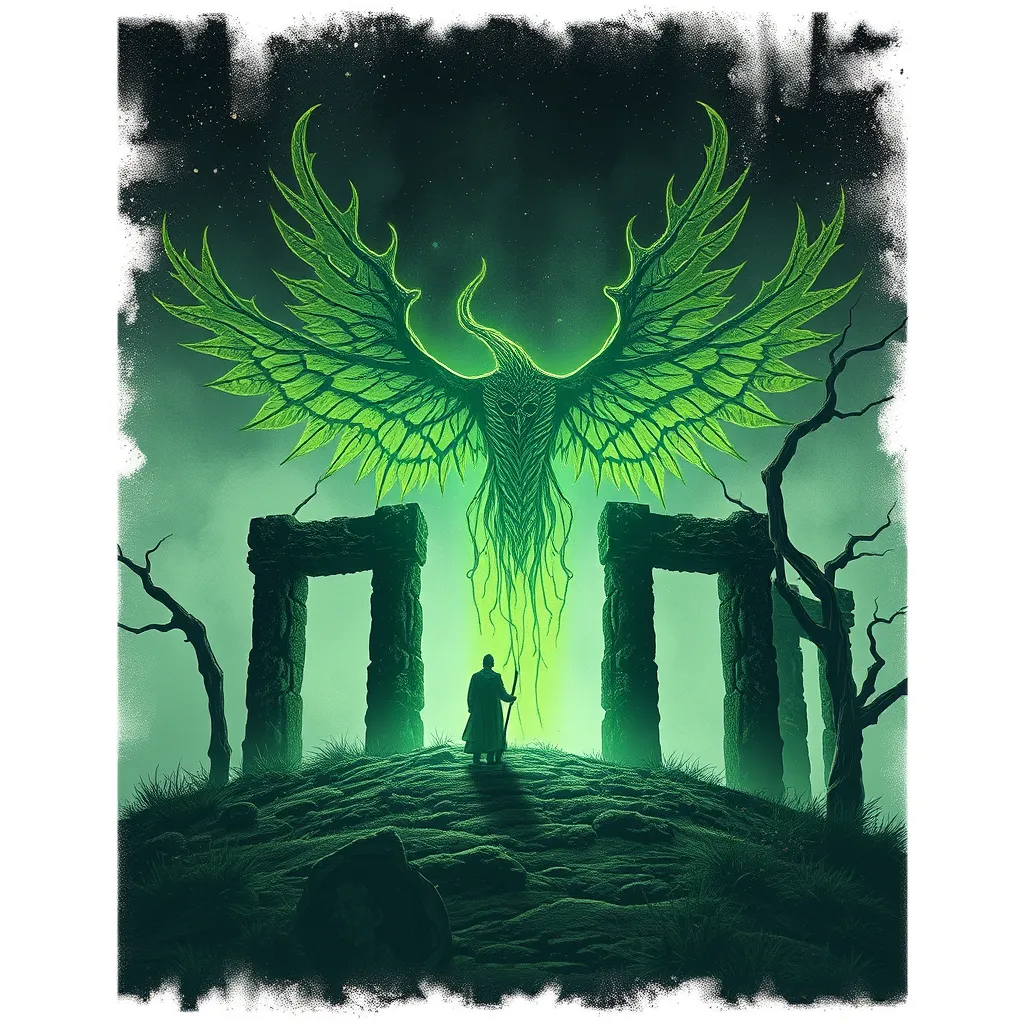The Banshee’s Historical Significance: The Myth as a Window into the Past
I. Introduction
The Banshee, or “bean sí” in Irish, is a mythological figure deeply rooted in Irish folklore, often depicted as a wailing woman whose cries herald the death of a family member. This spectral entity serves as both a harbinger of doom and a mournful presence, weaving tales of loss and remembrance throughout Irish culture. This article aims to explore the historical significance of the Banshee myth, examining its origins, symbolism, and the cultural contexts that have shaped its portrayal over centuries.
II. Origins of the Banshee Myth
The origins of the Banshee myth can be traced back to early references in Irish literature and oral traditions. Historical texts, including the “Leabhar Gabhála” (The Book of Invasions), mention female spirits associated with death and mourning, laying the groundwork for the Banshee’s character.
As the centuries progressed, the portrayal of the Banshee evolved. Initially depicted as a beautiful woman, her image transformed into that of a more fearsome figure, her wails echoing the grief of a family. This evolution reflects the changing perceptions of death and the supernatural in Irish society.
III. Symbolism and Cultural Significance
The Banshee embodies powerful themes of death and mourning. Her cries are not merely announcements of death but also symbolize the deep connection between the living and the dead. In Irish culture, death is often treated with reverence, and the Banshee serves as a reminder of the enduring presence of ancestors.
Moreover, the Banshee’s role connects to ancestral beliefs and the honoring of the dead. In many Irish families, the memory of the deceased is preserved through stories, rituals, and customs, with the Banshee acting as a link to this lineage.
IV. The Banshee in Historical Context
Throughout Irish history, the Banshee has played a significant role during times of conflict and societal change. During the Great Famine of the 19th century, for instance, the Banshee’s wail resonated with the collective grief of a nation suffering immense loss. She became a symbol of the mourning process, reflecting the reality of death in a turbulent period.
The Banshee also mirrors societal attitudes toward death in various historical contexts. In medieval Ireland, death was often seen as a transition rather than an end, with the Banshee representing a compassionate figure guiding souls to the afterlife. This perspective contrasts sharply with more modern views that often shy away from discussions of mortality.
V. Regional Variations of the Banshee Legend
The Banshee myth exhibits regional variations across Ireland, influenced by local customs and beliefs. For example:
- In Connacht, the Banshee is often described as an old woman who combs her hair while lamenting.
- In Ulster, she may appear as a beautiful maiden, emphasizing youth and loss.
- In some regions, families believe the Banshee is tied to their lineage, specifically linked to noble families or clans.
These variations highlight the adaptability of the Banshee legend and its ability to resonate with diverse cultural contexts within Ireland.
VI. The Banshee in Modern Culture
In contemporary society, the Banshee continues to captivate audiences through various forms of literature, film, and art. Modern interpretations often explore her role as a symbol of grief and loss in new ways, sometimes portraying her as a tragic figure rather than a mere harbinger of death.
Examples of the Banshee in modern culture include:
- Literature: Authors like W.B. Yeats and Seamus Heaney have incorporated Banshee motifs into their poetry, reflecting on themes of death and memory.
- Film: Movies such as “The Secret of Kells” and “Song of the Sea” weave elements of Irish folklore, including the Banshee, into their narratives, appealing to a global audience.
- Art: Contemporary artists often use the Banshee as a subject to explore themes of identity, loss, and the supernatural.
The enduring legacy of the Banshee in popular culture underscores her significance as a symbol of the human experience, particularly in relation to grief and remembrance.
VII. The Banshee as a Reflection of Irish Identity
The Banshee plays a crucial role in shaping Irish cultural heritage. As a figure deeply embedded in folklore, she serves as a reminder of the importance of storytelling in Irish society. Her myth reflects the values, fears, and beliefs of the Irish people, contributing to a shared cultural identity.
Furthermore, the Banshee’s significance extends to the Irish diaspora. For emigrants, the legend serves as a connection to their homeland, evoking feelings of nostalgia and belonging. The Banshee becomes a symbol of the ties that bind individuals to their roots, regardless of geographical distance.
VIII. Conclusion
In summary, the Banshee’s historical significance lies in her multifaceted role within Irish folklore. From her origins in ancient literature to her contemporary representations, the Banshee serves as a vital link to the past, embodying themes of death, mourning, and cultural identity.
Ultimately, the myth of the Banshee reminds us of the importance of folklore in understanding cultural history. Myths like hers provide insight into societal values and beliefs, enriching our appreciation of the human experience across time and space.




